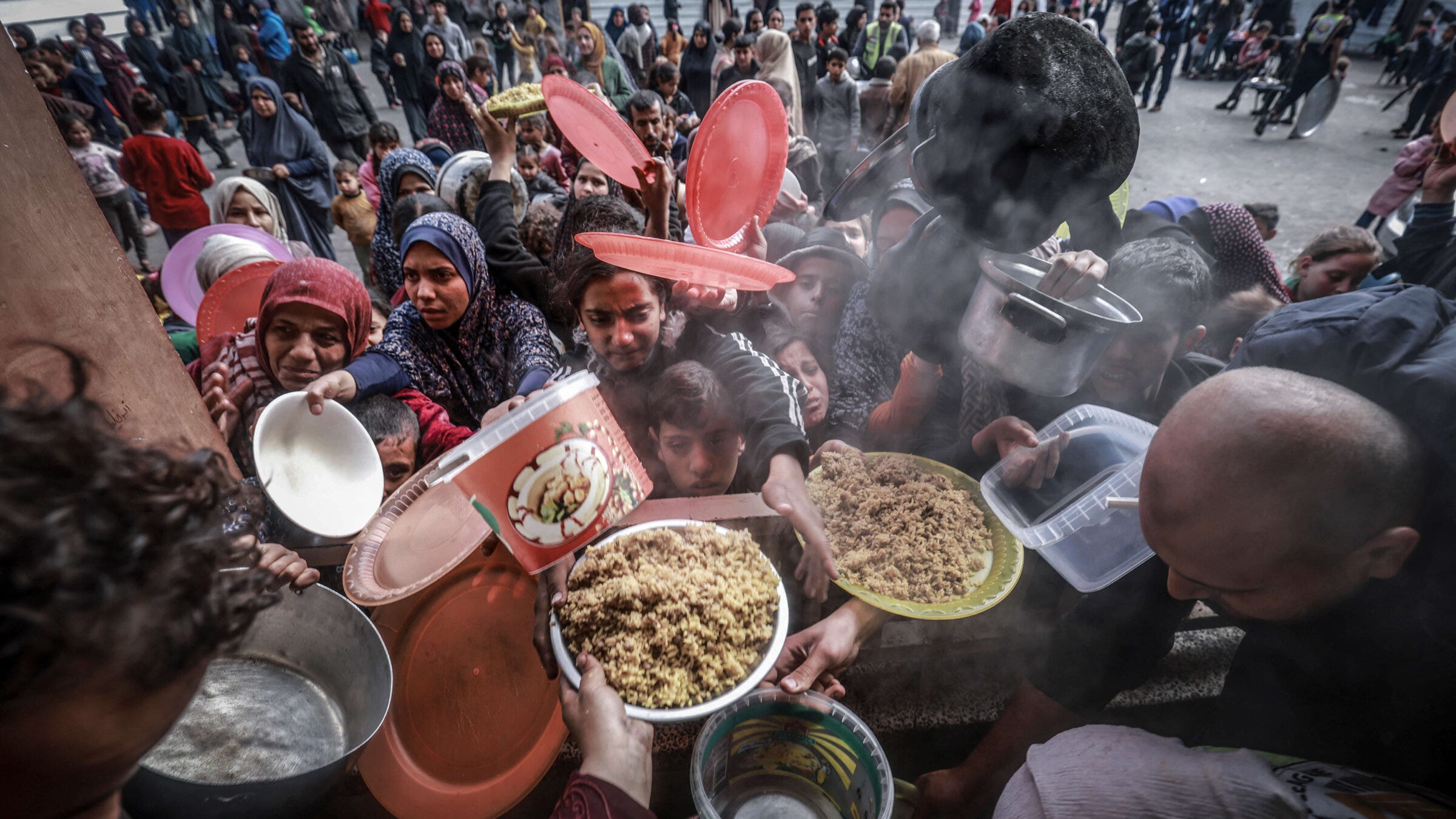
The starvation regime continues unabated as Israel continues its campaign in the Gaza Strip. One of the six provisional measures ordered by the International Court Justice entailed taking “immediate and effective measures” to protect the Palestinian populace in the Gaza Strip from risk of genocide by ensuring the supply of humanitarian assistance and basic services.
In its case against Israel, South Africa argued, citing various grounds, that Israel’s purposeful denial of humanitarian aid to Palestinians could fall within the UN Genocide Convention as “deliberately inflicting on the group conditions of life calculated to bring about its physical destruction in whole or in part.”
A month has elapsed since the ICJ order, after which Israel was meant to report back on compliance. But, as Amnesty International reports, Israel continues “to disregard its obligation as the occupying power to ensure the basic needs of Palestinians in Gaza are met.”
The organisation’s regional director for the Middle East and North Africa, Heba Morayef, gives a lashing summary of that conduct. “Not only has Israel created one of the worst humanitarian crises in the world, but it is also displaying callous indifference to the fate of Gaza’s population by creating conditions which the ICJ has said placed them at imminent risk of genocide.” Israel, Morayef continues to state, had “woefully failed to provide for Gazans’ basic needs” and had “been blocking and impeding the passage of sufficient aid into the Gaza strip, in particular to the north which is virtually inaccessible, in a clear show of contempt for the ICJ ruling and in flagrant violation of its obligation to prevent genocide.”
The humanitarian accounting on this score is grim. Since the ICJ order, the number of aid trucks entering Gaza has precipitously declined. Within three weeks, it had fallen by a third: an average of 146 a day were coming in three weeks prior; afterwards, the numbers had fallen to about 105. Prior to the 7 October assault by Hamas, approximately 500 trucks were entering the strip on a daily basis.
The criminally paltry aid to the besieged Palestinians is even too much for some Israeli protest groups which have formed with one single issue in mind: preventing any aid from being sent into Gaza. As a result, closures have taken place at Kerem Shalom due to protests and clashes with security forces.
Their support base may seem to be small and peppered by affiliates from the Israeli Religious Zionism party of Finance Minister Bezalel Smotrich, but an Israeli Democracy Institute poll conducted in February found that 68% of Jewish respondents opposed the transfer of humanitarian aid to the residents of Gaza. Rachel Touitou of Tzav 9, a group formed in December with that express purpose in mind, stated her reasoning as such: “You cannot expect the country to fight its enemy and feed it at the same time.”
Hardly subtle, but usefully illustrative of the attitude best reflected by the blood curdling words of Israeli Defence Minister, Yoav Gallant, who declared during the campaign that his country’s armed forces were “fighting human animals and we are acting accordingly” in depriving them of electricity, food and fuel.
In December 2023, the UN Security Council passed a resolution demanding, among other things, that the warring parties “allow and facilitate the use of all available routes to and throughout the entire Gaza Strip, including border crossings.” Direct routes were also to be prioritised. To date, Israel has refused to permit aid through other crossings.
In February, the Global Nutrition Cluster reported that “the nutrition situation of women and children in Gaza is worsening everywhere, but especially in Northern Gaza where 1 in 6 children are acutely malnourished and an estimated 3% face the most severe form of wasting and require immediate treatment.”
The organisation’s report makes ugly reading. Over 90% of children between 6 to 23 months along with pregnant and breastfeeding women face “severe food poverty,” with the food supplied being “of the lowest nutritional value and from two or fewer food groups.” At least 90% of children under the age of 5 are burdened with one or more infectious diseases, while 70% have suffered from diarrhoea over the previous two weeks. Safe and clean water, already a problem during the 16-year blockade, is now in even shorter supply, with 81% of households having access to less than one litre per person per day.
Reduced to such conditions of monumental and raw desperation, hellish scenes of Palestinians swarming around aid convoys were bound to manifest. On 29 February, Gaza City witnessed one such instance, along with a lethal response from Israeli troops. In the ensuing violence, some 112 people were killed, adding to a Palestinian death toll that has already passed 30,000. While admitting to opening fire on the crowd, the IDF did not miss a chance to paint their victims as disorderly savages, with “dozens” being “killed and injured from pushing, trampling and being run over by the trucks.” The acting director of Al-Awda Hospital, Dr. Mohammed Salha, in noting the admission of some 161 wounded patients, suggested that gun fire had played its relevant role, given that most of those admitted suffered from gunshot wounds.
If Israel’s intention had been to demonstrate some good will in averting any insinuation that genocide was taking place, let alone a systematic policy of collective punishment against the Palestinian population, little evidence of it has been shown. If anything, the suspicions voiced by South Africa and other critics aghast at the sheer ferocity of the campaign are starting to seem utter plausible in their horror.



